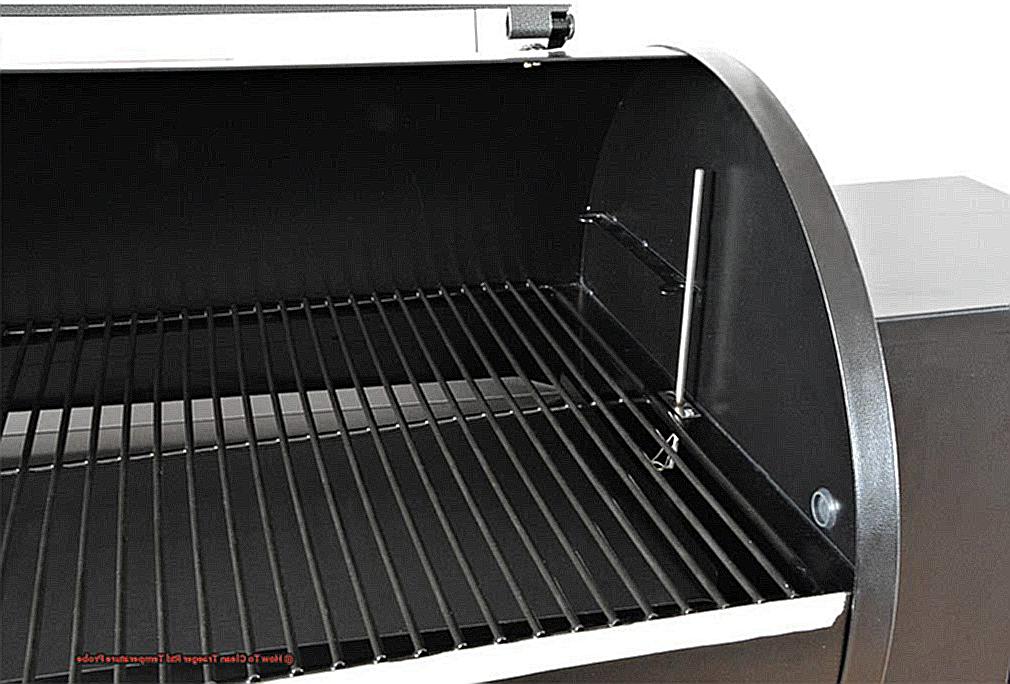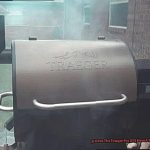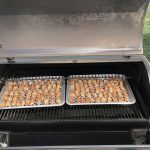Are you tired of constantly adjusting your Traeger grill’s temperature settings to get that perfect cook? Do inconsistent temperature readings leave you frustrated and unsure if your food is cooked to perfection? Look no further, because the solution may be simpler than you think – giving your Traeger RTD temperature probe some much-needed attention.
This small but mighty device plays a crucial role in ensuring your meals are cooked to perfection every time.
In this blog post, we’ll dive into the world of Traeger RTD temperature probes and show you how to clean and maintain them for precise temperature readings and deliciously cooked meals. Get ready to say goodbye to overcooked or undercooked food and hello to perfectly grilled dishes every time. Here’s what we’ll cover:
- The importance of a clean temperature probe for precise cooking.
- Common issues caused by a dirty or damaged probe.
- A step-by-step guide on how to clean your Traeger RTD temperature probe.
- Tips for maintaining your probe’s accuracy and longevity.
- Bonus: troubleshooting tips for any ongoing temperature problems.
So, grab your cleaning supplies, put on some music, and let’s give that trusty temperature probe the love it deserves.
Contents
- 1 4 Easy Steps to Clean Your Traeger RTD Temperature Probe
- 2 6 Important Points To Follow While Cleaning Traeger Temperature Probe
- 3 Why Do I Need to Clean My Traeger RTD Temperature Probe Regularly?
- 4 What are the Major Traeger RTD Probe Problems?
- 5 Can You Wash Traeger RTD Temperature Probe?
- 6 2 Methods to Test The Accuracy of Traeger RTD Temperature Probe
- 7 Can You Leave Traeger Probe Inside While Washing or Cooking on a Grill?
- 8 Should I Use a Traeger Temperature Sensor Cover?
- 9 Conclusion
4 Easy Steps to Clean Your Traeger RTD Temperature Probe
Maintaining your Traeger RTD temperature probe is essential for achieving the perfect barbecue results every time. Follow these four easy steps to keep your probe clean and in optimal working condition for your next grilling adventure.
Step 1: Clean with warm, soapy water
Start by wiping the probe with a soft cloth or sponge dampened with warm, soapy water. Gently wipe away any grease, dirt, or residue before drying the probe with a clean cloth.
Step 2: Use degreaser and steel wool
For tougher buildup, add a small amount of degreaser to the probe and let it sit for a few minutes. Then, scrub the probe using steel wool to remove any stubborn residue. Wipe away any remaining residue with a paper towel.
Step 3: Try vinegar or soap and scrub pad
If you’re dealing with stubborn buildup, consider using cleaning agents such as white vinegar or soapy water along with a scrub pad to effectively remove residue.
Step 4: Soak and rinse
For a deeper clean, use a toothbrush and soap to thoroughly clean the probe. Then, soak the glass portion of the probe in hot soapy water for 10 minutes before rinsing with warm water and drying with a soft cloth.
Remember to always clean your probe with hot, soapy water after each use to prevent buildup and ensure accurate temperature readings for your next grilling session. With these simple steps, you can maintain your Traeger RTD temperature probe and achieve perfect barbecue results every time.
6 Important Points To Follow While Cleaning Traeger Temperature Probe
Properly maintaining your Traeger temperature probe is crucial for ensuring accurate temperature readings and perfectly cooked barbecue every time. It is recommended to clean the probe every 3-6 months, with more frequent cleaning needed in certain conditions. Here are six important points to follow when cleaning your Traeger temperature probe:
- Clear any debris from the grill: Before beginning the cleaning process, use a grill brush or cloth to remove any excess debris from the grill. This will prevent any debris from getting in the way of cleaning the probe.
- Soak the probe in warm soapy water: Once the probe has been removed from the grill, let it soak in warm soapy water for 10-15 minutes. This will help loosen any stubborn residue or buildup on the probe.
- Gently scrub with a soft-bristle brush or sponge: After soaking, use a soft-bristle brush or sponge to gently scrub the probe and remove any remaining debris or buildup. Be mindful not to use anything too abrasive, as this could damage the probe.
- Thoroughly rinse: After scrubbing, rinse the probe with clean water to remove any soap residue.
- Dry before reattaching: Before reattaching the probe to the grill, make sure it is completely dry. Excess moisture can affect temperature readings and potentially damage the probe.
- Make it part of your regular maintenance routine: To maintain accurate temperature readings and extend the life of your Traeger temperature probe, incorporate cleaning into your regular grill maintenance routine. This will prevent excessive buildup and ensure optimal functionality of the probe.
By following these six important points, you can effectively clean your Traeger temperature probe and enjoy perfectly cooked barbecue every time.
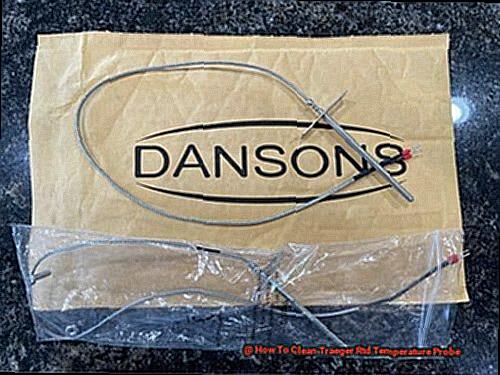
Why Do I Need to Clean My Traeger RTD Temperature Probe Regularly?
To guarantee perfectly cooked barbecue and accurate temperature readings, it is crucial to regularly clean your Traeger RTD temperature probe. By removing any buildup or debris that may interfere with the probe’s ability to measure temperature accurately, you can ensure consistent and reliable results with every use of your Traeger grill.
Here are some key reasons why regularly cleaning your Traeger RTD temperature probe is essential:
- Eliminates buildup: Over time, debris such as grease, food particles, and smoke residue can accumulate on the temperature probe. This buildup can impact the probe’s ability to measure temperature accurately, leading to overcooked or undercooked food. Regular cleaning can prevent this buildup from occurring.
- Ensures accurate readings: When the temperature probe is coated with debris or buildup, it may not make proper contact with the food being cooked. This can result in inaccurate temperature readings and unevenly cooked food. By regularly cleaning the probe, you can ensure proper contact and accurate measurements.
- Prevents damage: A dirty temperature probe can also cause damage over time. If debris is left on the probe for extended periods, it can corrode or damage the metal, affecting its performance. Regular cleaning can prevent this and prolong the life of your Traeger RTD temperature probe.
- Maintains food safety: Keeping your temperature probe clean is crucial for food safety. A dirty probe can harbor harmful bacteria that can contaminate your food and cause foodborne illnesses. Regular cleaning of your probe can help prevent these risks.
Regularly cleaning your Traeger RTD temperature probe is vital for maintaining accurate temperature readings, ensuring evenly cooked and safe food, and prolonging the life of your probe.
What are the Major Traeger RTD Probe Problems?
The Traeger RTD probe is an essential part of Traeger grills, responsible for providing precise temperature readings and ensuring perfectly cooked barbecue. However, like any electronic device, it may face issues that can affect its performance. In this section, we will discuss the major problems that may arise with Traeger RTD probes and how to resolve them.
Buildup of Moisture:
The most common problem encountered with Traeger RTD probes is the buildup of moisture. This can occur when the probe is exposed to high humidity or comes into contact with liquids during cooking. Moisture can cause inaccurate temperature readings or even prevent the probe from functioning altogether.
To address this issue, make sure to thoroughly dry the probe after each use. You can also try placing the probe in a container of uncooked rice overnight as rice is known for its effective moisture absorption.
Damage:
Another issue that may occur with Traeger RTD probes is damage. Mishandling, dropping, or exposure to extreme heat can damage the probe, resulting in inaccurate readings or complete malfunction.
If you notice any visible damage on your probe, it is crucial to replace it as soon as possible. Traeger offers replacement probes for their grills and following the manufacturer’s guidelines for installation can help resolve this issue.
Faulty Wiring:
In rare cases, faulty wiring can be the cause of problems with Traeger RTD probes. This can happen due to wear and tear over time or manufacturing defects. Faulty wiring can lead to inconsistent temperature readings or complete failure of the probe.
To fix this issue, carefully inspect the wiring and look for any loose connections or damage. If you are not comfortable fixing it yourself, it is best to contact customer service for assistance.
In conclusion, while Traeger RTD temperature probes may encounter some issues, they are relatively easy to address. Regular cleaning, careful handling, and proper maintenance can help prevent these problems. In cases where the probe cannot be fixed, contacting customer service for a replacement is the best course of action.
Can You Wash Traeger RTD Temperature Probe?
To maintain the proper functioning of your Traeger RTD temperature probe, it is crucial to regularly clean it. The probe can accumulate dirt, food particles, and grease, which can compromise its accuracy. However, it is not advisable to wash the probe in a dishwasher or submerge it in water as this can cause damage to its internal components.
To clean the Traeger RTD temperature probe, you will need a soft cloth, warm water, mild detergent or degreaser, and white vinegar (optional). Follow these steps for a thorough cleaning:
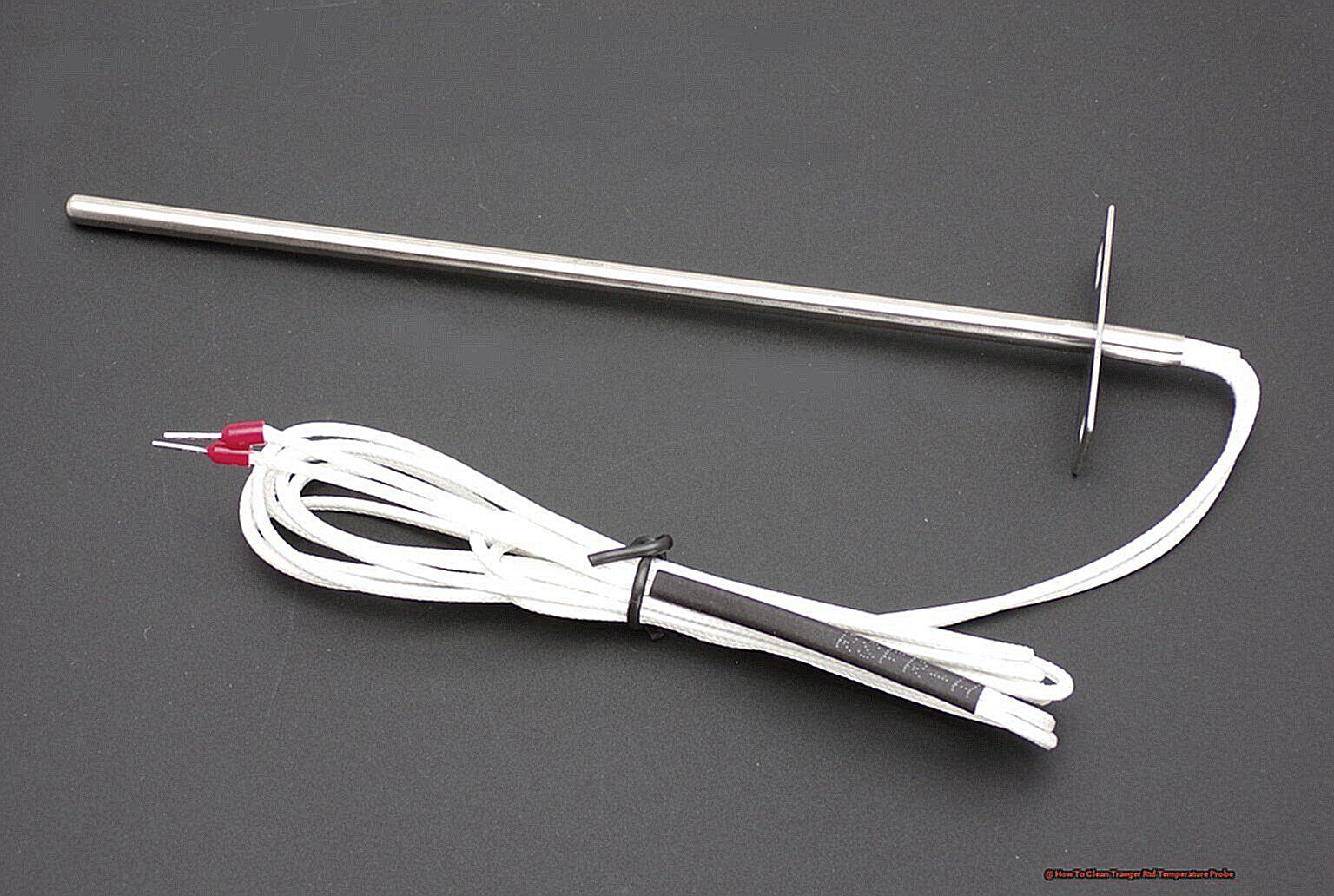
Prior to cleaning, unplug the Traeger probe.
Use a soft cloth and warm water to remove any dirt or debris buildup on the probe’s body. Ensure thorough drying.
For more stubborn buildups, gently scrub with a mild detergent solution or a small amount of degreaser. Rinse off the solution and dry the probe.
If the glass part of the probe is dirty, soak it in hot soapy water for 10 minutes, then rinse with warm water and dry with a soft cloth. Alternatively, you can use white vinegar and a scrub pad to clean the glass part of the probe, but be careful not to scratch the barrel.
Avoid using abrasive materials like steel wool to clean the probe as they can cause damage.
Regularly cleaning your Traeger RTD temperature probe not only ensures accurate temperature readings but also extends its lifespan.
2 Methods to Test The Accuracy of Traeger RTD Temperature Probe
There are two effective techniques for assessing the precision of a Traeger RTD temperature probe: the boiling water method and the ice water method.
Both approaches involve exposing the probe to extreme temperatures (either boiling or freezing) and verifying if it returns an accurate reading. Performing these tests regularly ensures that the probe is functioning correctly by detecting any potential inaccuracies and providing the opportunity for calibration or replacement, if needed.
Moreover, keeping the probe clean through regular maintenance can also help maintain its accuracy and functionality, ensuring precise temperature readings during grilling.
To guarantee a high level of accuracy in your Traeger RTD temperature probe, it is important to regularly test and clean it. These methods not only ensure proper functionality but also extend the lifespan of your probe and improve its overall performance.
Now, let’s dive into the specifics of these two methods:
The Boiling Water Method
The first method involves placing the probe in boiling water and comparing the reading to the boiling point of water (212 degrees Fahrenheit at sea level). If the reading is significantly off, then the probe may need to be recalibrated or replaced.
The Ice Water Method
In this method, the probe is placed in a glass of ice water and compared to the freezing point of water (32 degrees Fahrenheit at sea level). Again, any significant discrepancies in the reading indicate a need for recalibration or replacement.
By regularly testing your Traeger RTD temperature probe using these methods, you can ensure accurate temperature readings for your grilling needs. Don’t forget to also regularly clean your probe to maintain its accuracy and prolong its lifespan.
Can You Leave Traeger Probe Inside While Washing or Cooking on a Grill?
The answer is no.
Leaving the probe inside the grill while cooking may result in incorrect temperature readings and potential damage to both the probe and the grill. Therefore, it is crucial to always remove the probe from the grill before cleaning or cooking.
Furthermore, leaving the probe inside while washing can also harm its performance and cause damage. To ensure the probe’s longevity, it should be kept away from water and only cleaned with warm soapy water when necessary.
It is essential to note that the Traeger probe is not waterproof and should not be submerged in water. Doing so can cause irreversible damage and render it unusable.
To properly clean your Traeger probe, please follow these steps:
- Remove the probe from the grill before cleaning.
- Soak the probe in warm soapy water.
- Gently scrub any residue or buildup with a soft brush.
- Rinse the probe thoroughly with clean water.
- Dry the probe completely before storing it.
It is recommended to clean your Traeger probe every 3-6 months, or more frequently if you notice significant temperature discrepancies or decreased grill performance.
In conclusion, it is not safe to leave the Traeger probe inside while washing or cooking on a grill.
Should I Use a Traeger Temperature Sensor Cover?
Many users wonder if it is necessary to utilize a Traeger temperature sensor cover while cleaning the rtd temperature probe. Although it is not mandatory, using this cover is highly recommended as it can safeguard the probe from potential damage and guarantee precise temperature readings.
When cleaning your rtd temperature probe, it is crucial to use a gentle cloth or brush along with warm soapy water. Avoid using harsh chemicals or abrasive materials, as these can harm the probe and compromise its accuracy.
While cleaning, take the opportunity to inspect the probe for any signs of wear or damage. If you notice any cracks, breaks, or other issues, it may be time to consider replacing the probe.
Investing in a Traeger temperature sensor cover can provide an extra layer of protection for your probe. It can also prevent any buildup of debris or grease on the probe, which may impact its readings.
The following table displays some of the most popular Traeger models and whether they come with a temperature sensor cover included:
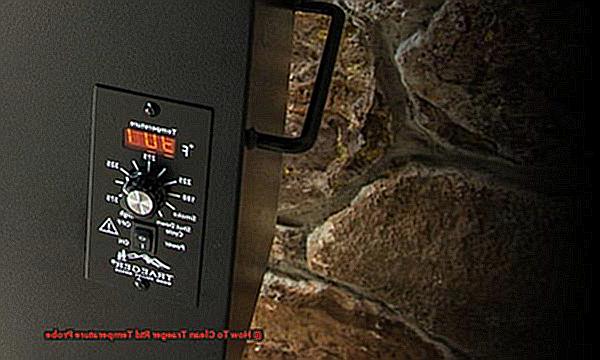
| Traeger Model | Temperature Sensor Cover Included? |
| Traeger Pro Series 575 | Yes |
| Traeger Ironwood 650 | Yes |
| Traeger Timberline 850 | Yes |
| Traeger Tailgater 20 | No |
| Traeger Lil’ Tex Elite 22 | No |
| Traeger Ranger Portable Grill | No |
| Traeger Bronson 20 | No |
| Traeger Pro 780 | Yes |
| Traeger Ironwood 885 | Yes |
| Traeger Timberline 1300 | Yes |
As evident in the table, most of the top-of-the-line Traeger models come equipped with a temperature sensor cover. However, if you own a model that does not include one, it is highly recommended to purchase one separately for added protection and accuracy.
So, while using a Traeger temperature sensor cover when cleaning the rtd temperature probe is not essential, it can offer numerous benefits in terms of safeguarding and precision.
Conclusion
In conclusion, keeping your Traeger RTD temperature probe clean is essential for achieving perfectly cooked meals and accurate temperature readings.
Neglecting to regularly clean and maintain your probe can lead to overcooked or undercooked food, which no one wants. In this blog post, we’ve emphasized the importance of a clean temperature probe, discussed common issues caused by a dirty or damaged probe, and provided a step-by-step guide on how to effectively clean it.
We’ve also shared valuable tips for maintaining its accuracy and longevity, as well as troubleshooting advice for any ongoing temperature problems.

